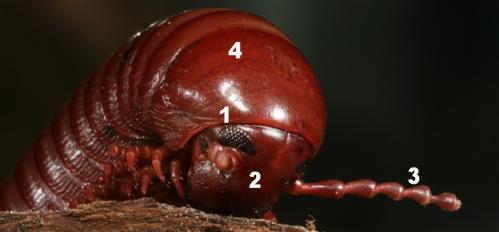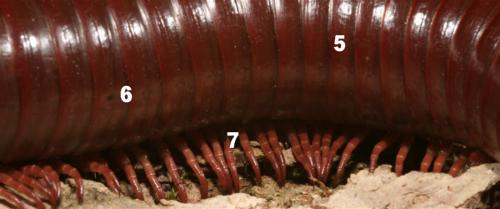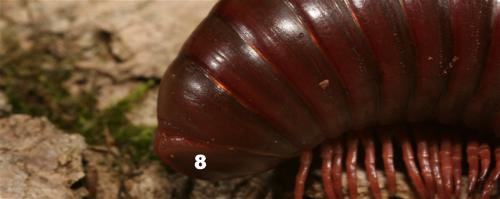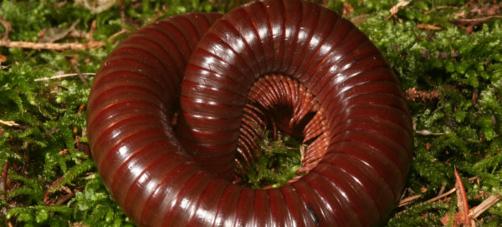Anatomy
The body can be seperated into head, thorax and abdomen. The head is protected by a big head shield ([4], first segment) and behind that shield, there are three simple segments with only one pair of legs - these are the thoracic segments. Then the abdominal affiliated double-segments follow. These segments have two pairs of legs.
Considering the head [2], there are the ocelli (conglomeration of simple eyes [1]) and the antennas [3]which are the most important sense organs. At the underside of the head, there are the mandibles. The first pair of legs is shortened and is not used as locomotory legs.

The body has a lot of segments with locomotory legs [7].But although they are called millipedes, they never have thousend legs! At the side of the body segments [5], there are the glands for the defense fluid [6]. Diplopoda are not poisonous, but have this acid-like defense fluid which makes the millipede taste bad for predators. For human the defense fluid is not dangerous but makes the skin red and inflamed. Between the sixth and seventh segment, at the underside instead of locomotory legs, there are the gonopoda.

Behind the segments with the locomotory legs there are some more segments without legs, followed be the telson (anal segment) and the anal flaps [8].


All pictures above show Orphistreptus guineensis.
Habitat
The habitat of the millipedes as nearly the same as the habitat of the centipedes. They are known worldwide, but only the tropical species reach a size of 20-30cm. As the millipedes are less endangered for dry-out as than the centipedes because of their chitin exosceleton without any bigger pleural zones, they don`t need so much protection against dry-out and are more day-active.
They live in soil or rotten wood as this is their main food and their main hiding spot.
Way of living
Millipedes often live communal in groups. They can be found in places where it is not too hot and not too dry, like forests.
Larger species are often populated by cleaning mites, which uses the millipede as transport, protection and eat dirt and herbal rests while cleaning the millipede. Millipedes can be often seen sitting there and cleaning antennas, legs and the rest of the body.